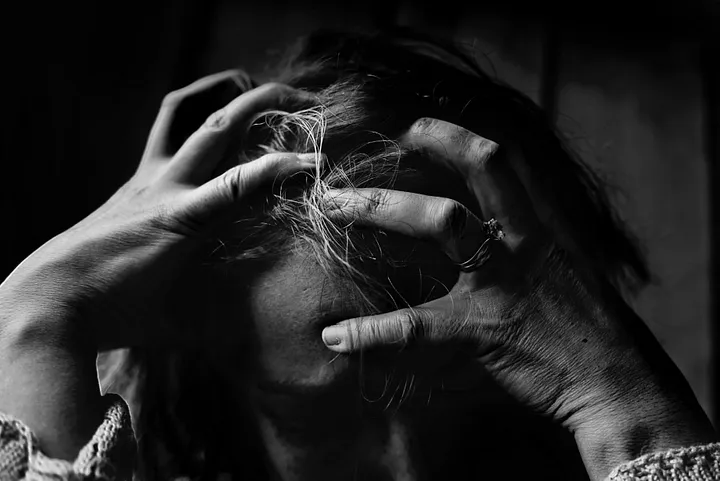Don’t Wait Until it’s Too Late
Meth is a poisoned mercurial salesman lying through his teeth selling you promises. But what is actually delivered is a heart-suck, followed by a mind, body, face, teeth, and soul-suck. Meth users experience an ever-increasing desire for the drug with less pleasure each time, even with larger doses. Meth doesn’t fulfill what it promised upon that first handshake, in fact, it comes back with a full-on face slap and fills recipients with the loneliest emptiness I’ve ever heard of.
Meth turns meditators into knife bearers. Yes, meth draws the sensitive ones into its smoking, blackened, cloudy, unpredictable cave-realm. Meth’s twisting fingers ring out the nice personalities of your loved ones, and it leaves them on the ground gasping for air in the muck.
Meth unravels our caring, vulnerable, fun-loving, empathic openminded friends and loved ones into unscrupulous schemers, who will weave us into their dark, backstreet tapestry completely unaware we’re being used. Another version of our family member or friend emerges, compulsively lying, stealing, and manipulating us and others to fulfill the insatiable cravings for the drug. Hooked and craving, the person we care about believes the lies meth tells them while simultaneously trying to run the other direction. Not wanting to be dependent, they are like prisoners, unwillingly caught and tethered. It’s too late. It’s too, too late.

Meth’s whispering voice tells smiling, perfectly crafted, convincing tales which addicts believe thoroughly: that they need it. The dependency tells them that they can’t handle things without it, and the cravings are unbearable needs for the drug.
My young adult sons both became meth addicts. Though it’s hard for me to talk about, it’s been more horrific to watch them lose their lives in desperation for weeks, months, and even years at a time, then try to find themselves again — lost, thin, and without a dime. Car accident shrapnel. Strangled, knifed necks. Beat up faces. Bloodied beds. And much worse. After the highs, confusion, and psychosis, I’ve repeatedly walked alongside them towards help. They’re gradually finding strength, clarity, and some freedom now. They truly want to be released from meth’s evil grip and have come out of the wilderness for now. They’ve worked hard through their bumpy recoveries. So, I never give up.
Pass the word on. You probably know someone too — maybe you love them. Understand facts about meth, and get help for yourself. Education is empowerment — learn about cocaine and all stimulants, since meth users turn to whatever they can find. Do your own radical self-care, so that you can stand tall and think clearly. Because, with meth, there is no “try.” There is only DO.
Prevention?
It’s possible, but never a promise. As a loved one, you can make other avenues obvious; help them find different answers, before they ever start (if you can). Things that give them confidence, build healthy connections, and help them love life. Go hiking with them. Meditate or do yoga with them. Play instruments with them. Dance. Sing. Laugh. Be completely silly with them, without using any substances. Show or remind them that you and they can have meaningful conversations and simple fun without drugs. Connect. Really, truly engage and be present.
Talk about drug use. Ask questions. Research meth with the impulsive, anxious people you care about and are frustrated by. Spend time you don’t feel you have. That’s one sacrifice in loving someone who has this predisposition, a disease they (and you) didn’t ask to get stuck with. Ask them to look at their beliefs. To check out the facts about using meth. To read about the effects of people taking stimulants, and how addictive they are. Knowledge lays a foundation.
It’s not just meth.
All stimulants are risky: Adderall, Vyvanse, Ritalin, Kratom, cocaine, Straterra. College students and 20-somethings especially believe these are brain candy. They trade and abuse these drugs to study or just get high. But they’re all wicked substitutes for developing mind power through enough sleep and focused attention, for conscious breathing, for meditation. For self-soothing and resetting skills, which are better long-term tools for managing anxiety.
My sons started out on prescriptions for Vyvanse by their pediatricians due to their ADD and ADHD as teenagers, but were soon doubling their doses and abusing them before eventually trying meth a few years later. As I look back, what seemed to be innocent dose increases at the time turned out to be warning signs for all of us that went unheeded.
Take charge now. Rock bottom can mean death.
Resources for those who struggle with addiction:
Check out these stories and research the truth about addiction. Don’t wait until it’s too late. Help your loved one get treatment if you know they’re dependent upon a stimulant.
Watch Kevin McCauley’s Pleasure Unwoven film and YouTube videos.
Check out Russell Brand and his real & raw offerings.
Tune into podcasts such as those with Gabor Mate.
Consult Walter Wolf’s book: The Right Rehab.
Listen to TedTalks like Johann Hari’s.
Bring up National Geographic’s 2017 Special Edition on Addiction.
Watch the film and/or read the book Beautiful Boy, by David Sheff.
David Sheff’s book Clean is one of the best out there, offering the facts about what our loved ones go through, dual diagnosis, getting them into treatment and how to help them in a variety of ways.
Read my book Conscious Bravery: Caring for Someone with Addiction to learn tools and daily practices to sustain you, and to find hope.
Join the parent group: Other Parents Like Me.
